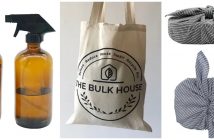One of the major challenges we face in our world today is sustainability. The current ways in which we live have a detrimental impact on future generations and it’s time to step up and face this issue head-on.
But what does sustainable living even mean?
To get some ideas and insights on the matter, I interviewed two expat families who are putting in the hard yards and leading the way.
The Yang Family
We spoke to 16-year Beijing veteran Hortense Yang, a French mom of two little girls named Amandine and Maxine, and her Beijinger husband Shaopeng. She also works in sustainability for an environmental NGO, and walks the talk wherever she can.
What does a sustainable family look like to you?
A family that produces zero waste and is well aware and following through on segregating, composting, and using resources such as water, electricity, paper, plastic, and gas carefully.
Ideally, I’d love our family to be living in the countryside on land that we ourselves cultivate to bring us food, so we know exactly what we eat and where it comes from. That way we can be more connected to our food, the waste we generate, and our environmental impact.
How do you communicate with your family about living more sustainably?
My husband and I are both aligned with the kind of eco-conscious family we want to create. We are fortunate in Beijing to have some great resources to help like the Zero Waste Family WeChat Group and The Bulk House.
As for our kids, they learn when you lead by example and it’s amazing when they come up with sustainable ideas on their own. My older daughter Amandine, for example, came to me one day saying that she wasn’t very happy to use paper towels in her school. She thought it was wasteful and would prefer to use a cloth towel. That was so amazing for me to listen to. It reassured me that she got it!
What would you say is a good starting point for families on their paths towards becoming more sustainable?
– Start with what’s easiest for you to do then build momentum and keep going.
– Refuse things you don’t need – whether it is plastic bags, straws, or paper cups.
– Reduce water, electricity, buying online, food deliveries and takeaways, and online deliveries.
Take it one step at a time and before you know it, you’re on to way towards becoming a sustainable family.
When did your family’s journey towards sustainability begin? What do you currently do?
My journey with sustainability started about ten years ago when I was working on a ‘green’ project for an organization that encourages young people to lead and influence by doing various kinds of social impact projects. While working there I stumbled upon a brochure written by the World Wildlife Fund (WWF) that had extensive information about how our environment was suffering. That was an “aha” moment for me, and I knew then that I had to join the green movement and get serious about sustainability. I found a job in an environmental NGO and never looked back.
When I got pregnant with my first child, we became even more conscious about maintaining a sustainable lifestyle at home. We started to carefully monitor the air we were breathing, the food we were eating, and how we could manage all our waste in an attempt to be as “zero waste” as possible.
As we laid some basic structures for our first child, it became easier to follow through when our second came along. Now, our habits are quite ingrained in the way we live.
Here are some of the things we do and use around the home:
– Beeswax food wraps instead of cling wrap for storing food
– Reusable food pouches for the kids
– Reusable nappies and menstrual cup
– Natural products like soap nuts for laundry
– Homemade cleaning products made with orange peels, vinegar, bicarbonate, and water
– Bamboo toothbrushes and toothpaste powder to minimize plastic waste
– Soap and shampoo bars instead of liquid gels
For our kids’ birthday parties, we request our friends to gift secondhand toys, or even get their kids to make a drawing or a present from materials at home
We use small basins around the bathroom to save water, and use them for flushing the toilet wherever possible
We reuse containers and jars in many different ways, like drinking glasses, storing toiletries, etc.
I love to use cloth wraps as gift paper, and collect discarded pieces of fabric in many shapes and sizes for this purpose.
Conclusion
Here’s something we can learn from them:
1. They faced the sustainability challenge head-on and continue to do so slowly and persistently. They speak up and talk about it with others, lead by example, and find creative ways of doing things differently.
2. They find ways to embrace the resources that are available to them for leading a sustainable lifestyle.
3. They give us a sense of reassurance that no matter where you are in the sustainable living spectrum, you can start small, learn along the way, and see how far it takes you.
When all is said and done, the biggest lesson of all was that sustainable living becomes incredibly real and hard to ignore when our own little ones come into the picture. What will the consequences of our actions be for their future on our planet?

This article first appeared in the beijingkids March 2019 Sustainability issue.
Photo: Courtesy of the Yang family




